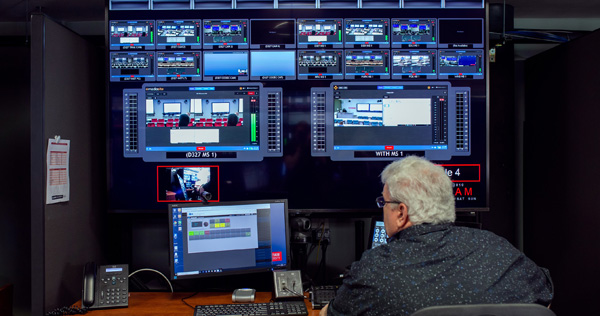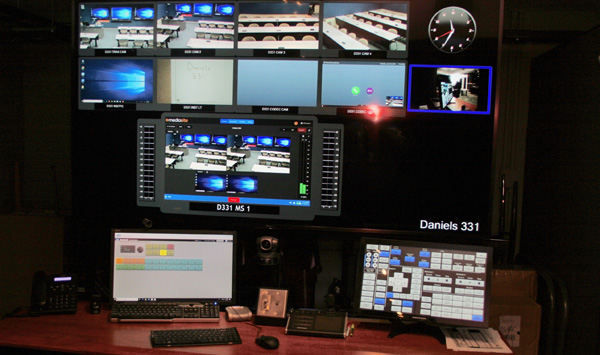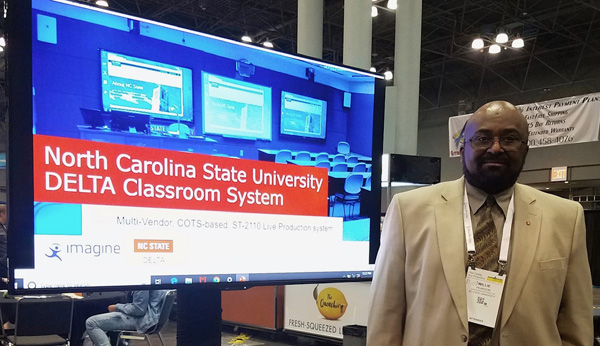NC University Uses IP Network to Connect Distance Learning Production

North Carolina (NC) State University has upgraded its live course production capabilities for distance education with a networked video infrastructure, based on the SMPTE ST 2110 standard for connectivity, around its campuses in Raleigh, NC.
The university’s Distance Education and Learning Technology Applications (DELTA) infrastructure was using dedicated fibre runs linking its centralised operations centre with six other buildings on the main campus and two extra buildings located about 10km away on their Centennial Campus. However, the fibre links were simply used as single-mode, point-to-point connections, supplying the capacity for just four video signals per classroom transmitted back to the operations centre.
Networked Capacity

As well as replacing systems that were beyond end-of-life, DELTA needed to manage much greater capacity across the wider university community. It had an ongoing commitment for efficient, reliable services delivering high-quality educational media to support their distance learning. The work involves over 130 live courses and 7,000 hours of classroom recordings supporting nearly 50,000 students enrolled in online and distance learning courses.
The new system uses just 16 networked fibres, leaving 20 strands from the original installation free for future expansion. The networked IP approach gives the DELTA team 32 x 32 HD signals from each remote building, achieved through the use of bidirectional 100 gigabit ethernet capacity across the fibre network.
Users can control and manage the entire network from a single point of contact, using Magellan SDN Orchestrator from Imagine Communications as a software control layer. Each production area can design its own monitor wall, using Imagine EPIC MV multiviewers under the control of a Crestron GUI. EPIC MV can probe IP streams and monitor mixed signal types on a single canvas, and gives system visibility across compressed and uncompressed IP workflows. Controlling the data flow is a Cisco Nexus 9336 router that, able to support up to 7 terabytes per second, prevents system bottlenecks.

An Imagine Selenio Network Processor (SNP) serves as the gateway between legacy SDI equipment and the IP environment, and carries out signal processing and networked video synchronisation. FPGA-powered and software-defined, each 1RU SNP has 32 channels of HD processing, which gives the system architects the combination of flexibility and power in a compact device. The SNPs at NC State connect to the Cisco Nexus infrastructure via 10-kilometer transceivers, managing simultaneous 100 Gb by 100 Gb traffic within two single-mode fibre strands.
Giant Router
“The Imagine ST-2110 IP network incorporating Magellan SDNO and Selenio Network Processors gives us a bi-directional distributed system that makes the whole campus one giant router,” said Tony Pearson, senior associate director, Video Communication Services from the DELTA team at NC State. “We use PTP timing and AES67 audio, so that we can put together the video and the audio resources any class needs with Audio Video Bridging and instantly reconfigure for the next one.
“It moves us from a constrained system to a flexible one today, and more important, it gives our installation scope for the future. Because of the SMPTE ST 2110 standard, we can connect other devices – like replay servers or cameras – as we need to replace them, making the network capable of taking on other work."

Following a four-year process of research, site visits, product evaluations and real-time pilots in their own work environment, DELTA decided in January 2019 that the SMPTE ST 2110 was the best route for their future workflow. The equipment from Imagine Communications was chosen, and by April of that year, designs were finalised and approved.
DELTA’s in-house teams worked collaboratively with local integrator ClarkPowell and the Imagine team, to complete the implementation in time to support the first classes of the academic year in August 2019. www.imaginecommunications.com





